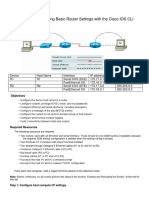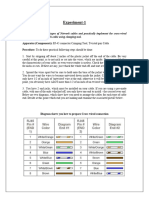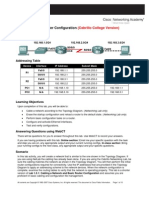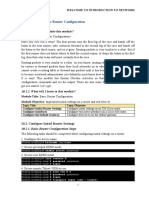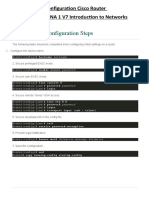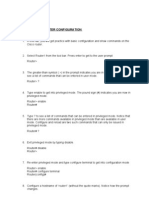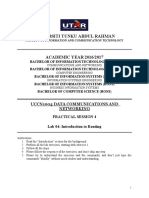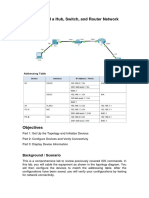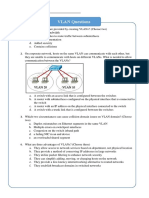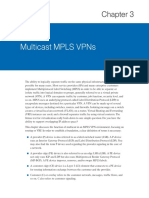0% found this document useful (0 votes)
17 views9 pagesLab Practice 4 Basic Router Configuration
This lab guide outlines the steps for performing an initial configuration on routers R1 and R2, including setting host names, passwords, and IP addresses. It details tasks such as cabling the network, configuring interfaces, and verifying the setup through routing tables and connectivity tests. The document also emphasizes the importance of proper documentation and troubleshooting techniques for ensuring successful network communication.
Uploaded by
mberengakelvin0Copyright
© © All Rights Reserved
We take content rights seriously. If you suspect this is your content, claim it here.
Available Formats
Download as DOC, PDF, TXT or read online on Scribd
0% found this document useful (0 votes)
17 views9 pagesLab Practice 4 Basic Router Configuration
This lab guide outlines the steps for performing an initial configuration on routers R1 and R2, including setting host names, passwords, and IP addresses. It details tasks such as cabling the network, configuring interfaces, and verifying the setup through routing tables and connectivity tests. The document also emphasizes the importance of proper documentation and troubleshooting techniques for ensuring successful network communication.
Uploaded by
mberengakelvin0Copyright
© © All Rights Reserved
We take content rights seriously. If you suspect this is your content, claim it here.
Available Formats
Download as DOC, PDF, TXT or read online on Scribd
/ 9



